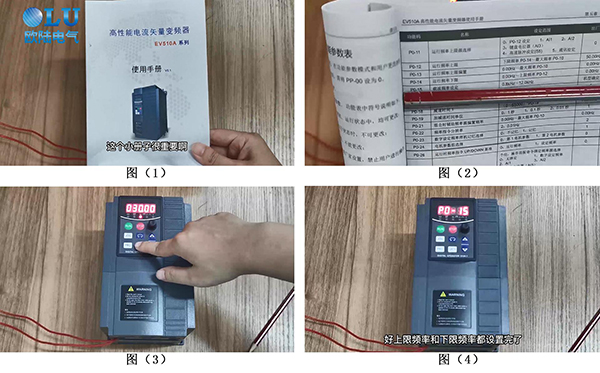How to set the upper and lower frequency limits of the frequency converter
For those in the industry, the upper and lower frequency limits of a frequency converter are well-known parameters. As their names suggest, these parameters are used to restrict the operating frequency within a specific range. Today, a technical engineer from Nanjing Eurotherm Electric will explain how to set the upper and lower frequency limits of a frequency converter.
First, the upper frequency limit ensures that the actual output frequency does not exceed this value, regardless of changes to the target frequency. Similarly, the lower frequency limit ensures that the actual output frequency does not fall below this value. Depending on the load driven by the system, it is sometimes necessary to restrict the motor's maximum and minimum speeds to ensure both the safety of the system and the quality of the product. In such cases, the frequency must be confined to a specific range, which can be achieved by configuring these two parameters.
Occasionally, malfunctions in the control panel potentiometer or external command signals can cause the frequency to become excessively high or low. Setting the upper and lower frequency limits provides a protective measure in such situations. By default, the lower frequency limit of a frequency converter is 0 Hz, and the upper limit is 50 Hz. This means the speed adjustment range via the potentiometer is 0–50 Hz. However, some equipment may have specific frequency requirements—for instance, the operating frequency must not exceed 30 Hz or fall below 10 Hz. If these limits are not adhered to, the quality of the produced goods may be compromised.
Next, let’s walk through the practical steps for setting these parameters. Generally, the product comes with a user manual upon purchase—it is essential to keep this manual safe, as it is very important. According to the manual, the relevant parameters can be modified as shown in Figure (1): P0-12 sets the upper operating limit, and P0-14 sets the lower operating limit, as illustrated in Figure (2).
First, adjust the parameter P0-12 on the device. Assuming the equipment requires a frequency range of 0–30 Hz, press PRG to enter P0, then press DATA to access the P0 parameter group. Use the up arrow key to navigate to 12, press DATA to enter P0-12, and the default upper limit of 50 Hz will be displayed. Use the down arrow key to adjust it to 30 Hz, then press DATA to save the setting, as shown in Figure (3).
Next, set the lower frequency limit. Use the up arrow key to navigate to 14, press DATA to enter P0-14, and the default lower limit of 0 Hz will be displayed. Adjust it to 10 Hz, then press DATA to save. Now, both the upper and lower frequency limits have been set, as shown in Figure (4).

We hope this introduction to the setting of the upper and lower frequency limits of the frequency converter has provided you with a better understanding of its functionalities. To learn more about frequency converter settings, you can visit the official website of Nanjing Eurotherm Electric Co., Ltd. or contact us online.